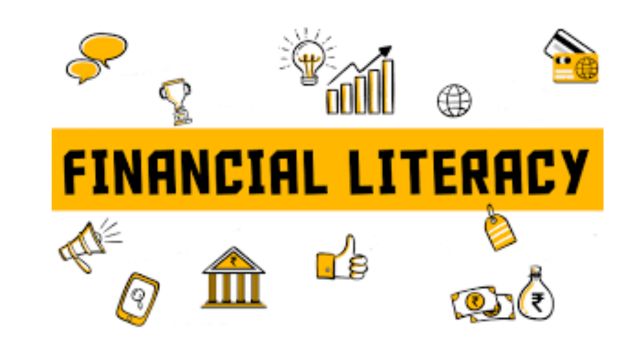Navigating the difficult economic terrain of today requires financial knowledge. From knowing credit, taxes, insurance, and investments to handling personal budgets, financially savvy people are more ready to make wise judgments. Understanding this, governments all across have started national-level financial literacy campaigns meant to equip their people with basic financial knowledge.
Examining some of the most effective government-run financial literacy initiatives worldwide, this paper highlights their goals, target markets, and ways of influence.
1. National Strategy for Financial Education (NSFE) – India
Launched by: Reserve Bank of India (RBI), Securities and Exchange Board of India (SEBI), and other regulators
Objective: Promote financial awareness across all demographics, particularly rural and underserved communities.
The NSFE is India’s flagship initiative to promote financial literacy. It targets school children, young adults, women, senior citizens, and small business owners. The program focuses on budgeting, saving, insurance, digital payments, and responsible borrowing.
Key initiatives:
- Money Smart School Program: Financial literacy curriculum in schools.
- RBI Financial Literacy Week: Annual thematic campaigns across banks and financial institutions.
- Digital Saksharta Abhiyan (DISHA): Teaching digital financial skills in rural areas.
2. National Financial Capability Strategy (NFCS) – United States

Launched by: Financial Literacy and Education Commission (FLEC)
Objective: Increase financial capability and promote informed decision-making.
In the U.S., the NFCS aims to develop a coordinated national strategy that includes federal agencies, nonprofits, schools, and private companies. The initiative focuses on budgeting, credit scores, savings, student debt, and retirement planning.
Key components:
- MyMoney.gov: A centralized platform offering practical tools, calculators, and educational resources.
- Jump$tart Coalition: A partner program promoting K–12 financial education.
- FDIC’s Money Smart Program: Free training modules available to individuals and educators.
3. Financial Literacy and Inclusion Campaign – Canada
Launched by: Financial Consumer Agency of Canada (FCAC)
Objective: Build financial resilience and empower Canadians to manage money wisely.
Canada’s national strategy aims to strengthen financial knowledge and address barriers that marginalized communities face. It emphasizes saving habits, debt management, fraud protection, and financial planning.
Popular tools:
- Your Financial Toolkit: A comprehensive learning platform covering everything from taxes to fraud protection.
- Financial Literacy Month (November): Nationwide awareness campaigns and free workshops.
- Budget Planner: Interactive tool to help users create realistic monthly budgets.
4. MoneySense – Singapore
Launched by: Monetary Authority of Singapore (MAS)
Objective: Help Singaporeans manage money wisely and plan for the future.
MoneySense is one of the most sophisticated government-led financial education initiatives in Asia. It focuses on practical, everyday money matters, including budgeting, home loans, insurance, retirement, and investing.
Core offerings:
- Financial Health Check Tool: A free online assessment of financial well-being.
- Investor Alert List: Updates on scams and unregulated entities.
- Workshops & e-Learning: For students, workers, and retirees.
5. Money & Pensions Service (MaPS) – United Kingdom
Launched by: UK Government
Objective: Improve financial well-being across five key areas: budgeting, saving, credit, debt advice, and pensions.
The UK Strategy for Financial Wellbeing, run by MaPS, brings together public and private efforts to improve financial outcomes for individuals and families.
Flagship programs:
- MoneyHelper: A government-backed service offering personalized financial guidance online.
- Pension Wise: Free advice service for individuals nearing retirement.
- Talk Money Week: A nationwide campaign to encourage open discussions around money.
6. ASIC’s MoneySmart Program – Australia
Launched by: Australian Securities and Investments Commission (ASIC)
Objective: Promote responsible financial behavior and smart decision-making.
MoneySmart is a trusted resource offering easy-to-understand advice on budgeting, debt, investments, superannuation (retirement savings), and mortgages.
Tools available:
- Budget Planner and Loan Calculators
- Financial Guidance for Life Events: Marriage, divorce, buying a home, etc.
- School Curriculum Support: Teaching kits for educators.
Why These Programs Matter
- Empowering individuals: A financially literate population makes better choices, reduces personal debt, and builds long-term wealth.
- Boosting economic health: Knowledgeable consumers help stabilize national economies by making informed financial decisions.
- Protecting the vulnerable: Government programs help protect low-income and rural populations from financial scams and risky loans.
- Encouraging saving culture: Most of these programs are designed to change the savings habits of people over time.
Conclusion
Your government probably provides free and useful resources to assist you better grasp your money whether your country is India, the United States, Canada, Singapore, the UK, or Australia. Financial literacy is not a luxury in the fast-paced digital world of today; it is a need.
Investigate the tools, go to the webinars, and start small—even a little financial knowledge can help to create a safe future.
No matter where you are, financial literacy matters. Digital India MIB connects you with international programs, official schemes, and essential tools to build a stronger financial foundation. Join our platform and begin your journey toward informed, confident financial decisions today.













